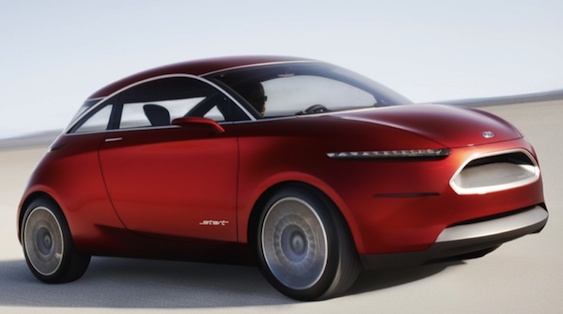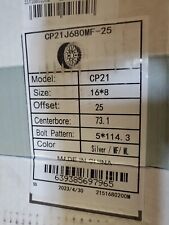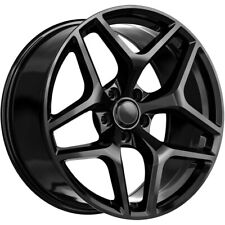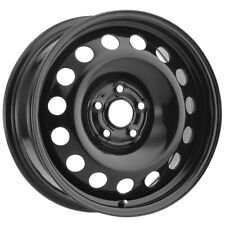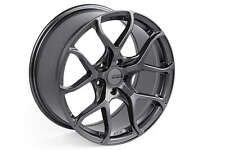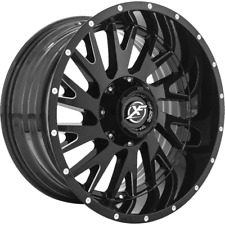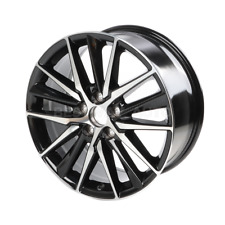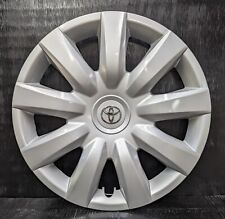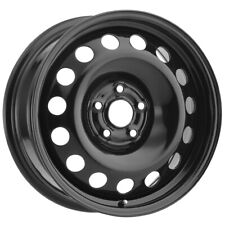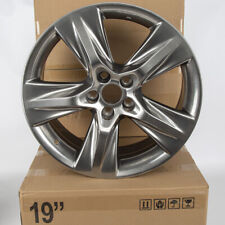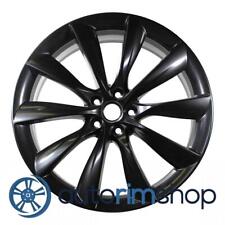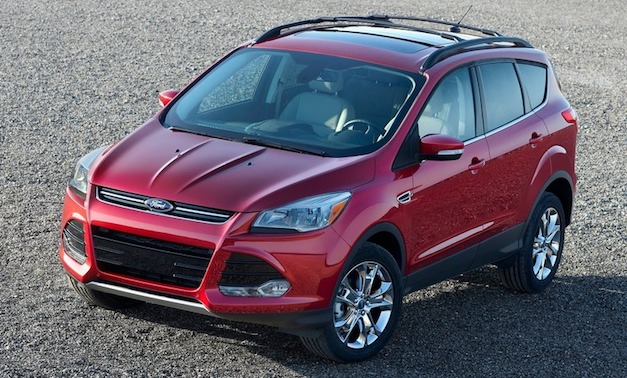2010 Beijing: Ford Start Concept carries 3-cylinder EcoBoost, subcompact design
No this is not another Audi A1 concept, in fact this is a Ford. At the 2010 Beijing Motor Show, FoMoCo unveiled the new Ford Start Concept – the first concept put together by the Dearborn automaker in more than three years.
“Our ambition with the Ford Start Concept was to design a car that goes beyond the practical realities of commuting in these mega cities, to go beyond just dressing the technology. We wanted to design a car you would also love,” explained Freeman Thomas, Design Director, FoMoCo.
Besides the crisp, smooth exterior shell constructed with lightweight composite body panels that snap-fit on an aluminum structure and the innovative interior (put together by Ford’s Irvine, California Strategic Concepts Group Studios), the model features a 3-cylinder EcoBoost. Power for the Ford Start Concept comes from a 1.0L 3-cylinder EcoBoost engine that delivers power and torque comparable to a normally-aspirated I-4 powerplant.
We have no tech specs nor do we have any fuel-economy figures, but we’re guessing this concept hints at Ford’s future expansion of the EcoBoost engine range along with hints at subcompact cars for emerging markets (seeing as it debuted in China).
Check out the press release and high-res gallery after the jump.
Press Release:
The Ford Start Concept Shows the Newest EcoBoostTM Engine
The Ford Start Concept is the first concept car created by Ford in more than three years. The car made its debut April 22, 2010, at the Beijing International Auto Show, also marking the first time Ford has unveiled an all-new concept vehicle a China show. The Start Concept is more than simply a design study. It previews a fuel-efficient three-cylinder EcoBoost engine with 1.0 liter of displacement and the power of a larger I-4 engine.
The Ford Start Concept was inspired in part by a growing global trend toward mass urbanization. The world’s top 20 mega-cities are home to consumers whose needs, attitudes and expectations may have more in common with mega-city dwellers in other nations than with their own countrymen. While these consumers share the challenges of living in an urban society, they also increasingly seek out product solutions that bring the best the world has to offer.
Today, more than 50 percent of the world’s population lives in an urban area. By 2050, that number is expected to skyrocket to more than 70 percent. Already, congested highways, space for parking, concerns over fuel efficiency as well as the availability and price of fuel are driving automakers to look at vehicles and personal transportation more differently than ever before.
Living in a mega city poses unique challenges and inspires unique lifestyles and attitudes. Just as traffic congestion issues are common in these geographic areas, the answers to solve the issues of a new generation of future small cars for these urban markets may also be found in the Ford Start Concept.
Powertrain
Ford powertrain engineers previewed something very real and close to being reality under the hood of the Ford Start Concept car. It’s an all-new and compact addition to the advanced Ford EcoBoost engine family. Consistent with Ford’s long-range goals to provide more power though sophisticated turbocharging and spark-ignited, direct-injection fuel management systems, the 1.0-liter Ford EcoBoost engine delivers power and torque comparable to a normally-aspirated I-4 powerplant. It is expected to have CO2 emissions under the 100 gm/km threshold.
This engine is coupled with a six-speed manual transmission which permits gear spacing to deliver performance without sacrificing fuel economy. The transmission easily handles the higher torque levels of the 1.0-liter Ford EcoBoost engine and together with the sporty handling of the Ford Start Concept, delivers the fun-to-drive characteristics that are at the core of the Ford brand DNA.
Connectivity
Located at the top of the console is a port to connect to the MyFord Mobile concept technology, which provides a seamless driver interface conducive to safe driving practices with personal handheld devices.
Without a smart phone, car-related functions including heating, ventilation and air conditioning, engine diagnostics and passenger airbag on/off function can be easily viewed and adjusted while driving through either voice activation or toggle and scroll controls located on the console. A wide, six-inch screen provides visuals.
As an added feature, when the driver inserts a smart phone in the docking station when the vehicle is in motion, access is available via the MyFord Mobile Concept to phone contacts and navigation tools through voice activation, as are all messaging, direction and communication features.
If the smart phone device is docked and the vehicle is parked and powered off, both the vehicle functions and icons from the user’s device are available via the MyFord Mobile Concept. Icons are displayed on the large screen through Bluetooth transfer. Car functions and the speaker system also are controlled through voice activation.
MyFord Mobile Concept restricts certain functions, such as texting, while driving.
Design
“With the Ford Start Concept, we didn’t set out to design some sort of utilitarian concept to save the world, nor were we interested in following the competitive trend toward an overly noisy design language. What we did set out to do was design a personality driven car that exudes warmth, charm and aspiration…to design a car worth bonding with,” said J Mays, Group Vice President Design and Chief Creative Officer, Ford Motor Company.
Crisp highlights are incorporated into a smooth exterior shell constructed with lightweight composite body panels that snap-fit on an aluminum structure.
Ford’s trademark kinetic trapezoidal grill moves upward onto the rounded, sleek form, reducing the number of prominent openings from two to one and creating a face that’s both sporting and efficient. The entire exterior surface of the Ford Start Concept has been designed with flush-mounted aerodynamic features designed to cheat the wind – providing a minimal amount of drag while achieving maximum fuel efficiency.
The innovative hybrid aluminum, high-strength steel body construction features a lightweight aluminum safety cell that provides a rigid attachment structure for the glass and roof, as well as housing side curtain air bags. All exterior body panels are made from deformable, pre-colored recyclable composites.
Slim, laser-cut LED headlamps provide high-intensity light through trapezoid tubes. Two sets of running lamps, including a pair located in the headlamp design and a pair of lower running lamps, provide nighttime illumination.
Created by a global team of designers working at Ford’s Irvine (Calif.) Strategic Concepts Group Studios, this sporty, futuristic concept combines near-production Ford EcoBoost engine technology, slick aerodynamics and low weight in an environmentally friendly package with reduced greenhouse emissions, all wrapped in an exciting design.
– By: Omar Rana

